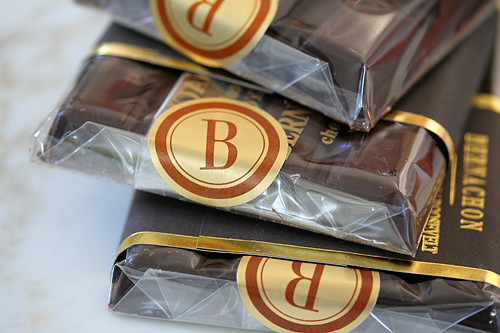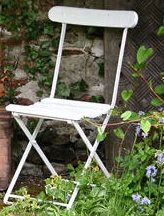
Of course Johnny Depp and Juliette Binoche in the movie of the same name. But what about true chocolat? What country comes to mind? Switzerland? Belgium? It is interesting that both of these countries are next door neighbors to France. Even France’s neighbor across the channel, England, has France to thank for its first chocolate. The London chocolate store, the Coffee Mill and Tobacco Roll, was established by a Frenchman in 1657. The chocolate sold there was so expensive only the wealthy could afford it.

France has a long history with chocolate. Indeed some of the finest treats such as chocolate mousse, the chocolate éclair and chocolate truffles were all made popular by the French. The 1615 wedding of Louis XIII to Anne of Austria (the daughter of Phillip II of Spain) was where the French court discovered the strange brew known for its revitalizing and aphrodisiacal properties.
The first "Chocolatier du Roi" (Chocolatier to the King) was a Parisian tradesman by the name of David Chaillou. In 1659, King Louis XIV bestowed on Chaillou the title of "Chocolatier du Roi" for 29 years, granting him the exclusive privilege to make and sell chocolate in France. Chaillou opened a shop on Rue de l'arbre sec, not far from the Louvre, where he was the first to serve hot chocolate in a Paris chocolate house. In 1780 that royal appointment of chocolates was revived when Chaillou's great-great-grandson Sulpice Debauve became the official chocolate-maker of Queen Marie-Antoinette. Sulpice Debauve, established a chocolate shop in Paris. His chocolate was so revered that he was able to open additional shops and had established 60 shops just four year later. His nephew, Antoine Gallais, began partnering with him in 1823. The name of the shops were changed to Debauve and Gaillais. Louis XVIII, Charles X and Louis Philippe all appointed Debauve and Gaillais as the Official Chocolatiers of the French Court.

French chocolate must be made with at least 43% cocoa liquor. No animal or vegetable fat is allowed. Many French chocolate makers use up to 80% cocoa liquor as the higher the percentage, the richer the final product will be. This standard creates a chocolate without rival.
Another famous chocolate and pastry boutique in France is La Maison du Chocolat. Robert Linxe was born in Basque country and completed an apprenticeship in Bayonne. From there he completed his studies in Switzerland and returned to France and opened a shop in Paris in 1955 called Marquis de Presles. It was sold in 1977 to Gaston Lenotre. I would like to imagine that the lemon tart featured below is being reserved for “Laura”.
In 1945, Maurice Bernachon opened the Bernachon Chocolate Factory in Lyons, France at the age of 26. He was trained in the art of chocolate making by his parents. Sixty years later the Bernachon factory is still famous for its delicious chocolate.

Richart Chocolate began in 1925 on the Croix Rousse hill in Lyons France where Joseph Richart, created and maintained his laboratory. The company is still family owned by the children and grandchildren of Monsieur Richart.

Saving my personal favorite for last is Ladurée. This famed French institution came onto the radar of many American’s after their luscious treats were showcased in Sofia Coppola’s film “Marie Antoinette”.

Louis-Ernest Ladurée began his career as a miller (one who operates a flour mill). He began his bakery in 1862. After it burnt down in 1871 it was rebuilt on the same location, 16 rue Royale, in Paris. Jules Chéret, a master of Belle Époque poster art, was responsible for the famed interiors. The ceilings feature cherubs dressed as pastry cooks which went on to become the companies emblem. Ladurée’s true rise to fame was in 1930 when Ladurée’s grandson, Pierre Desfontaines, created a double decker macaron with a creamy ganache filling. Desfontaines also opened a “salon de thé” (tearoom). The pastry and tea shop was a great success with the ladies as they were not admitted to the French cafés at the time.

In 1993 the company was sold to the Holder Group which has expanded the number of tearooms to now include locations on the Avenue des Champs-Élysées in Paris, London, Monaco, and Italy among others.






















































